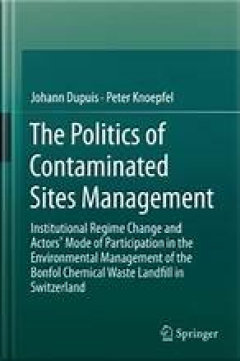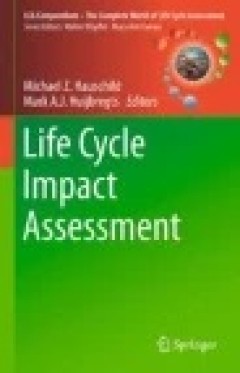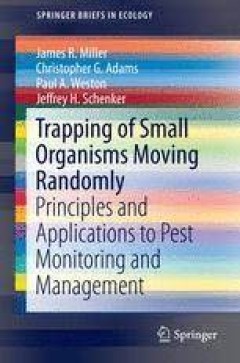Filter by

Umwelt- und Bioressourcenmanagement für eine nachhaltige Zukunftsgestaltung
In diesem Open Access-Buch werden fünf zentrale Themenbereiche des Umwelt- und Bioressourcenmanagement (UBRM) vorgestellt. Umwelt- und Bioressourcenmanagerinnen und -manager kennen die Herausforderungen des 21. Jahrhunderts, wie sie zum Beispiel in der Agenda 2030 der Vereinten Nationen – den sogenannten nachhaltigen Entwicklungszielen (Sustainable Development Goals - SDGs) – formu…
- Edition
- 1
- ISBN/ISSN
- 9783662604359
- Collation
- XIV, 273 hlm; ill., lamp.,
- Series Title
- -
- Call Number
- -

Maritime Spatial Planning: past, present, future
This open access book is the first comprehensive overview of maritime or marine spatial planning. Countries across the globe are beginning to implement maritime spatial plans; however the authors of this collection have identified several key questions that are emerging from this growing body of MSP experience. How can maritime spatial planning deal with a complex and dynamic environment such a…
- Edition
- 1
- ISBN/ISSN
- 9783319986968
- Collation
- XXXVII, 477 hlm; ill., lamp.,
- Series Title
- -
- Call Number
- -

Guideline for Salinity Assessment, Mitigation and Adaptation Using Nuclear an…
This open access book is an outcome of the collaboration between the Soil and Water Management & Crop Nutrition Section, Joint FAO/IAEA Division of Nuclear Techniques in Food and Agriculture, Department of Nuclear Sciences and Applications, International Atomic Energy Agency (IAEA), Vienna, Austria, and Dr. Shabbir A Shahid, Senior Salinity Management Expert, Freelancer based in United Arab Emi…
- Edition
- 1
- ISBN/ISSN
- 9783319961903
- Collation
- XXVI, 164 hlm,: ill, lamp;
- Series Title
- -
- Call Number
- -

Oxygen Isotopes of Inorganic Phosphate in Environmental Samples
This open access book distinguished itself from other publications by offering step-by-step instructions on how to extract, purify, provide modifications, and major issues to be encountered during the process. For the δ18OP method to progress, further fundamental research as well as field and laboratory studies need to be conducted for a better understanding of P cycling in the environment. C…
- Edition
- 1
- ISBN/ISSN
- -
- Collation
- -
- Series Title
- -
- Call Number
- VII, 64

The Politics of Contaminated Sites Management
By the end of the 1970s, contaminated sites had emerged as one of the most complex and urgent environmental issues affecting industrialized countries. The authors show that small and prosperous Switzerland is no exception to the pervasive problem of sites contamination, the legacy of past practices in waste management having left some 38,000 contaminated sites throughout the country. This book …
- Edition
- 1
- ISBN/ISSN
- 978-3-319-11307-4
- Collation
- XIX, 159, 20 b/w illustrations, 8 illustrations in colour
- Series Title
- -
- Call Number
- -

Life Cycle Impact Assessment
This book offers a detailed presentation of the principles and practice of life cycle impact assessment. As a volume of the LCA compendium, the book is structured according to the LCIA framework developed by the International Organisation for Standardisation (ISO)passing through the phases of definition or selection of impact categories, category indicators and characterisation models (Classifi…
- Edition
- -
- ISBN/ISSN
- 978-94-017-9744-3
- Collation
- -
- Series Title
- -
- Call Number
- -

Trapping of Small Organisms Moving Randomly
This new book is the first to make logical and important connections between trapping and foraging ecology. It develops and describes—both verbally and mathematically--the underlying principles that determine and define trap-organism interactions. More important, it goes on to explain and illustrate how these principles and relationships can be used to estimate absolute population densities i…
- Edition
- 1
- ISBN/ISSN
- 978-3-319-12994-5
- Collation
- XVIII, 114
- Series Title
- SpringerBriefs in Ecology
- Call Number
- -

Multicriteria Decision Analysis in Geographic Information Science
This book is intended for the GIS Science and Decision Science communities. It is primarily targeted at postgraduate students and practitioners in GIS and urban, regional and environmental planning as well as applied decision analysis. It is also suitable for those studying and working with spatial decision support systems. The main objectives of this book are to effectivley integrate Multicrit…
- Edition
- 1
- ISBN/ISSN
- 1867-2442
- Collation
- XV, 331
- Series Title
- Advances in Geographic Information Science
- Call Number
- -
 Computer Science, Information & General Works
Computer Science, Information & General Works  Philosophy & Psychology
Philosophy & Psychology  Religion
Religion  Social Sciences
Social Sciences  Language
Language  Pure Science
Pure Science  Applied Sciences
Applied Sciences  Art & Recreation
Art & Recreation  Literature
Literature  History & Geography
History & Geography